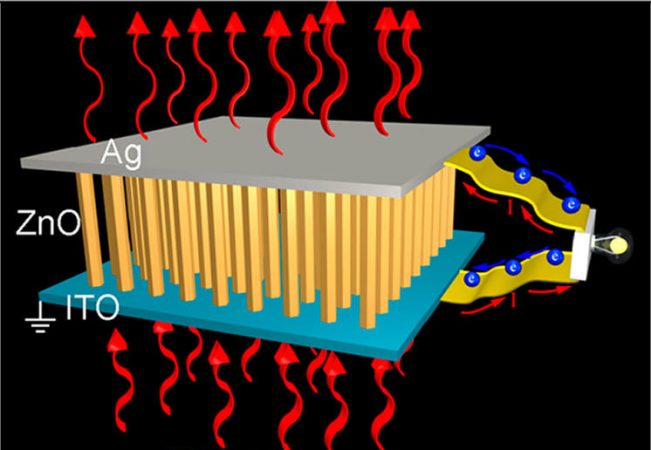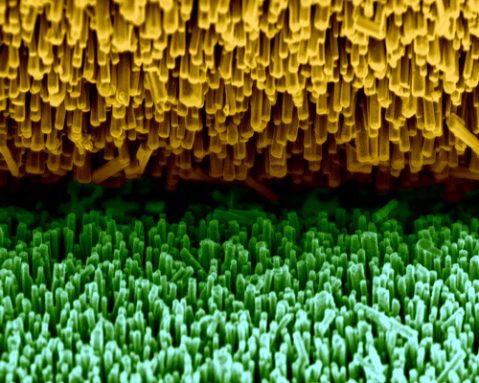Hot technology
A new device harvests energy that would otherwise go wasted

Almost every device that needs energy also wastes energy. Cars get their zip by burning gasoline, but that process heats up the car — and that heat is wasted energy. Computer batteries get hot when they’re in use; so do cell phones and kitchen appliances. All that hot air adds up: The U.S. Department of Energy estimates that more than half of the energy generated in America will be wasted, mainly as lost heat.
But where some see waste, Zhong Lin Wang sees opportunity. Wang is an engineer at the Georgia Institute of Technology in Atlanta. He thinks energy can be harvested from all that lost heat, and he’s built a device to prove it.
In the April issue of NanoLetters, a research journal about the science and energy of supersmall things, Wang introduces his device. It’s made of tiny wires that generate electricity as they change temperature. A test model shows that the idea works. It’s too weak to be useful, but Wang is already working on the next version.

Z.L. Wang and X.D. Wang, Georgia Institute of Technology
His device looks like a crazy, double-backed hairbrush, with one end of each wire attached to each of the hairbrush’s two flat, metal backs. When Wang turns up the heat — or turns it down — the wires generate an electric current between the two back plates. Scientists describe the wires as being “pyroelectric,” which means they make electricity when their temperature changes. As they heat, electricity flows in one direction. When they cool, the electric current flows in the reverse direction.
Wang’s device uses wires made from zinc oxide, a material that already has many uses — from plastics and cement to sunscreens. Wang finds zinc oxide useful for his devices because of something we can’t see with the naked eye. The unusual arrangement of atoms in each molecule of this substance is what makes it generate electricity in response to temperature changes.
“When you accelerate or decelerate an automobile, the engine heats up and cools down, and you could use that to generate electricity,” Wang says. “Or when the weather changes, like if it’s daytime and a cloud comes in, you could generate electricity from that.”
Scientists didn’t study pyroelectric substances seriously until the 1800s. Since then, researchers have struggled to find a way to make these materials useful. Pyroelectric devices may produce only a trickle of electricity. That means they won’t power an air conditioner, but they might harness enough energy to run personal devices.
Wang points out that zinc oxide is cheap, environmentally friendly — and now points to a new way to retrieve what would be wasted energy.
In the future, he says, harvesting energy from wasted heat could be commonplace. Already, electronic devices are getting smaller, like cell phones and music payers. “If we use this energy harvested from waste to power devices, we won’t have to use batteries.”
Power words
electricity An electric current that is generated by the flow of electrons around a circuit and can be used as a source of power
pyroelectric Having the property of becoming electrically charged when heated.
ultraviolet radiation Strong, invisible energy with short wavelengths. Ultraviolet radiation can damage the skin.
zinc oxide A white solid used as a pigment and in medicinal ointment.







